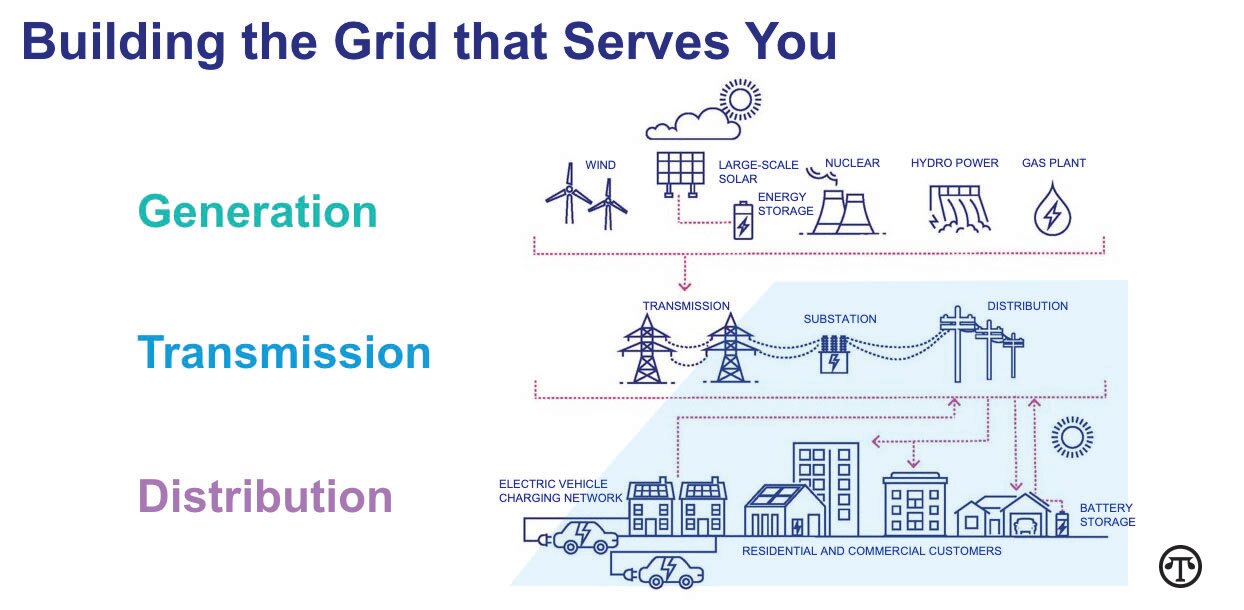 Post Classifieds
Post Classifieds
Clean Energy Made Easier In Massachusetts

(NAPSI)—Reliance on electricity is growing as communities transition away from pollution-producing fossil fuels to clean, sustainable power sources to combat climate change. The U.S. Department of Energy says the country’s energy grid will need to more than double between now and 2035 to accommodate increased demand and get power where it’s needed.
That means new-generation facilities that produce cleaner and more sustainable power.
How the Power Grid Works
Generation: Where the power comes from. Traditionally, it’s produced in plants that use fossil fuels such as oil or other forms such as nuclear, hydro (water), and gas. Generators operate most efficiently and cost effectively when close to power sources.
Increasingly, the U.S. is moving away from dirty fossil fuels that create climate change-causing pollution in favor of cleaner fuel sources such as wind and solar. These renewable energy sources, however, are intermittent. They’re available only when the wind blows or the sun shines. So battery storage technology is critical to make sure enough renewable power is available when and where it’s needed.
Transmission: The interstate highways of the electric system. Big lines—overhead or underground—operate at relatively high voltages and transmit large quantities of power over long distances, enabling the lowest-cost power to reach the greatest number of people.
Sub-transmission lines bring the power to a regional distribution substation, where power is further reduced in voltage to be safely be sent to homes and smaller businesses.
Substations use circuit breakers, switches, relay protection, and more to correct imbalances in power supply and demand.
Distribution: If transmission is an electricity superhighway, distribution is the grid of local streets—the last leg of the journey that power makes before reaching consumers.
Conductors or cables known as distribution feeders leave the substations, carrying power to local distribution points. There, transformers further reduce voltage to a standard consumer level of between 110 and 240 volts, safe for homes and businesses to use. (A typical household runs on 110 volts).
Transmission plus distribution lines make up the power grid.
The Problem
Unfortunately, due to increased focus on electrifying industries ranging from public transportation and private vehicles to smart homes, commercial heating and cooling systems, and data centers, the current power grid isn’t strong or big enough right now to handle that growing demand.
Also, the rise in extreme weather events such as hurricanes, snowstorms, and extreme heat and cold, strain the grid and make it more prone to power outages.
An Answer
A smarter, stronger, cleaner grid will let Massachusetts meet its ambitious climate change goals and transition to a more sustainable future. Because projects of this size can take years to accomplish, the state needs to make these investments today, and to understand how electricity is generated and distributed.
What the future may look like
Reliability—the ability to make sure that the power goes on, and stays on, when you need it—is the top priority in the move to clean energy.
In Massachusetts, National Grid has started a grid modernization planning process that outlines the investments necessary over the next 5-to-10 years and beyond to make the clean energy future a reality. Utilities like National Grid welcome the opportunity to work with the state as well as a wide range of stakeholders and customers to make sure the clean energy transition is a success.
Energy consumers care about combatting climate change and transitioning away from fossil fuels, and about affordability and reliability.
A wide variety of programs help people manage their bills and, if they’re eligible, qualify for reduced cost and no-cost assistance electric rates and in making upgrades to their homes and businesses to ensure they are best positioned to benefit for a clean energy future.
Learn More
For further information, visit www.masssave.com and www.national gridus.com/MA-Home/Bill-Help/Payment-Assistance-programs.
On the Net:North American Precis Syndicate, Inc.(NAPSI)
Get Top Stories Delivered Weekly
Recent The Xavier University Newswire News Articles
Discuss This Article
GET TOP STORIES DELIVERED WEEKLY
FOLLOW OUR NEWSPAPER
LATEST THE XAVIER UNIVERSITY NEWSWIRE
- Unknown Mortal Orchestra's II
- Bullet to the Head misses its target
- Casual Vacany leaves the reader feeling unfulfilled
- Songs in the Key of... "LOVE" : Players' new show to be annual event
- Respect yourself first
- The future of Xavier
- An inside look into an English professor's academic conferences and conventions
RECENT THE XAVIER UNIVERSITY NEWSWIRE CLASSIFIEDS
OUTSIDE THE LINES
- A Story To Sing About
- The Gap in Gum Care: Why Caring For Your Teeth’s F...
- Top Tips for Signature Scents and Better-Smelling Laundry
- A Dog Trainer’s Top Tips to Support Pets Through Life S...
- Clear the Air of Indoor Pollutants This Spring
- Stroke & Dementia in Black Men: Tips for Staying Healthy...
- Hispanics and African Americans at Higher Risk for Eye...
- African Americans at Higher Risk for Eye Disease
- Infinity Kings: Final Book In A Favorite Fantasy Series
- What You Need To Know About Keratoconus and the iLink...
FROM AROUND THE WEB
- Don’t Let Diabetes Shortchange Your Golden Years
- No Child is Forgotten By Marine Toys for Tots
- Sweeten Your Springtime Salads With Healthy Chilean Grapes
- Young Author Translates 4,000-Year-Old Text to Reveal...
- Keeping Cool and Energy-efficient Amid America’s “...
- Addressing Sarcopenia with a Healthy Diet
- Subway’s New Wraps Elevate Eating on the Go
- Family Teacher Conference Topics Beyond Academics
- Youth Take Down Tobacco
- BookTrib’s Bites: Four Reads to Kickoff Spring








